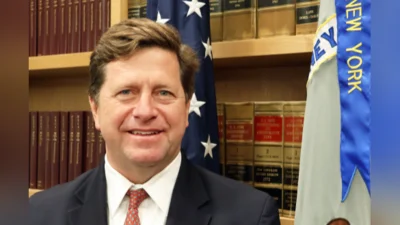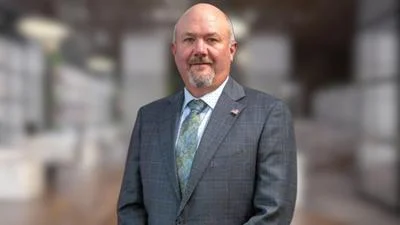The Congressional Record is a unique source of public documentation. It started in 1873, documenting nearly all the major and minor policies being discussed and debated.
“GREEN LIGHTS, MONTREAL PROTOCOL” mentioning the U.S. Dept of State was published in the Senate section on pages S14428 on Sept. 27, 1995.
The publication is reproduced in full below:
GREEN LIGHTS, MONTREAL PROTOCOL
Mr. JEFFORDS. Mr. President, the amendment I offered yesterday will restore the EPA Administrator's ability to fulfill our obligations under the Montreal Protocol. In addition, it will authorize the EPA Administrator to fund the successful Green programs, including the Green Lights Program and Energy Star Buildings Programs.
I need not go into detail on the importance of the Montreal Protocol. Last year, the Congress appropriated $119 million for these important programs--$101 million for the Green programs and roughly $17 million for the Montreal Protocol multilateral fund. This amendment will allow the Administrator to spend up to $100 million on these programs, a 13-
percent cut from last years levels.
Negotiated and signed by President Reagan and expanded and implemented by President Bush, the Montreal Protocol is working to reduce the production and use of ozone-depleting substances. President Reagan believed it was vital that we fulfill our commitments under this important treaty. President Bush took a leadership position and urged the rest of the world to agree to a complete phase out of a number of ozone depleting substances. President Bush also concluded the negotiations, begun by President Reagan, to establish the multilateral fund.
Now, let me explain the fund, because this is what we are debating today. The multilateral fund was created in 1990 in order to assist developing countries in their efforts to phaseout ozone depleters. Since the development of the fund, 100 developing countries have ratified the protocol and agreed to the protocol's strict reduction requirements. They did this with the understanding that the fund would assist these developing countries in transferring the technology necessary to end this use of ozone-depleting substances. Most of this technology comes from the United States.
Failure to pay our share of the fund would force developing countries to end their protocol obligations. This would lead to increased use of ozone-depleting substances in developing countries and offset the tens of billions of dollars spent by the developed countries to phase them out.
Let me summarize.
No money to the fund.
Violation of our commitment to the treaty.
Greater use of CFC's by developing countries.
Faster depletion rates of the ozone.
More negative health effects, such as skin cancer and cataracts.
We must maintain our commitment to protect the ozone layer.
My colleagues may argue that funds for the Montreal protocol belong in the State Department budget, not the EPA budget. As a member of the Foreign Operations Appropriations Subcommittee, I am continuing to work to ensure that the protocol has adequately funded the State Department budget. However, I believe that funding for international programs is so limited, that offsetting the loss in this bill would be impossible.
Since 1991, almost one-third of the money for the fund has come from EPA. We made the decision, in 1990, to require EPA to assist the State Department. Let me read from section 617b of the Clean Air Act Amendments of 1990, which many of us here today voted for. Quote:
The Administrator, in consultation with the Secretary of State, shall support global participation in the Montreal protocol by providing technical and financial assistance to developing countries.
And at that time we authorized $30 million to be spent for the fund.
The phaseout of CFC's is not just an international political issue, it is a technical, industrial, and environmental issue, on which EPA is respected globally. Further, through its experience in the United States of ridding the country of ozone-depleting substances, EPA has a good understanding of the benefits of U.S. technologies, and has been able to promote those technologies in other countries.
This is no time to end this progress.
Let me spend a minute on the Green Lights Program. I remember President Bush searching for alternatives to the overregulation, command and control policies of the 1970's and 1980's. He longed to find a way to control pollution in a nonregulatory, free-market manner. His legacy to the environment is his success in developing just such a program.
The Green Lights Program, and Energy Star Programs, are a testament to the type of innovative programs we must implement if we wish to reduce the regulatory burden faced by industry today. The programs are voluntary, reduce energy use, decrease our dependence on foreign energy, save business money, and stimulate markets for clean, alternative energy technologies and services.
Green Lights is simple. EPA provides technical assistance to help a company survey its facilities and upgrade its lighting. That's it. Since its inception, Green Lights has saved companies hundreds of millions of dollars and dramatically reduced air pollution emissions. All this without one regulation.
This is the most successful public-private partnership running. Just ask companies in my own State, such as IBM, our largest utility--Green Mountain Power, Jay Peak Ski area, and others.
Ask the Mobile Corp., who points out in this article in Time magazine that with the help of EPA Green Lights they have reduced their lighting energy costs by 49 percent.
Eliminating this program now would be unwise. This program reduces the need for regulation. Without Green Lights we might need more regulation to accomplish what is now being done with a voluntary partnership.
I believe one of the reasons this program is slated for elimination is that it is considered corporate welfare. Let me tell you why it is not.
EPA does not give any grants or financial assistance to Green Lights partners.
All funds are spent for information dissemination and communication.
The resulting investment by participants is more than 50 times the Federal investment.
Green Lights participants represent a wide range of entities, including 360 schools, 193 hospitals, numerous churches, local governments, small businesses, and nonprofit groups.
Overcoming market barriers is valuable to many, but beyond the reach of individual organizations. Many businesses cannot afford to keep on hand the technical expertise that EPA has assembled to help business succeed in reducing their energy costs in this manner.
Green Lights is a successful public-private partnership. It creates jobs and opportunities for sound energy use and savings, while at the same time preventing pollution. This is a model, nonregulatory program.
Mr. President, I urge my colleagues to seriously consider the consequences of ending these two vital programs. My amendment does not increase spending, nor does it cut from other areas of the bill. The amendment simply requests that the EPA Administrator be allowed to spend, within available funds, enough funds to keep these important programs up and running.
____________________








